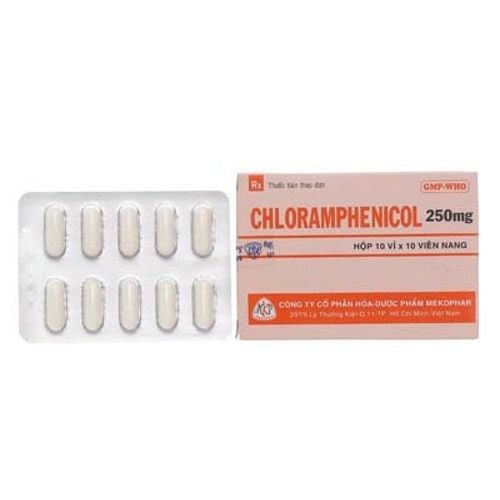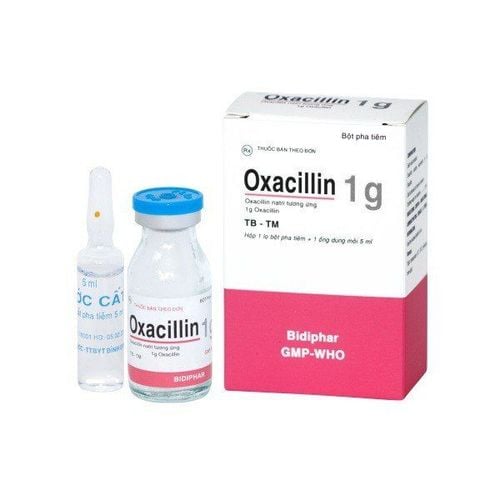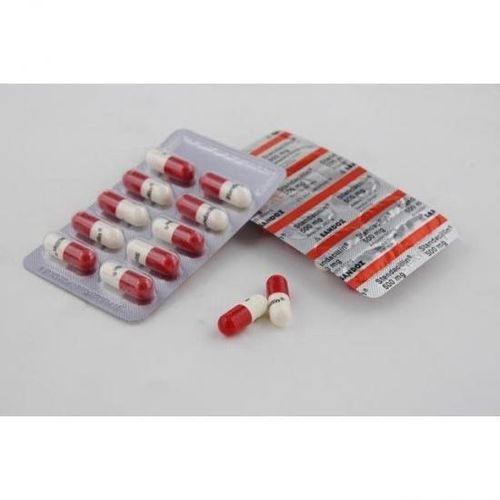This is an automatically translated article.
Chloramphenicol is an antibiotic used to treat infections caused by susceptible bacteria in the form of hard capsules. Before using Chloramphenicol 250 mg, patients need to understand the use, consult a doctor to know the dose and unwanted effects.1. What is Chloramphenicol?
Chloramphenicol is a bacteriostatic antibiotic, and at high concentrations or with highly susceptible bacteria can be bactericidal.
Chloramphenicol's bacteriostatic action occurs through binding to the 50S corpuscle of bacterial ribosomes, thereby inhibiting protein synthesis in susceptible bacteria. The bacteria that are highly sensitive to Chloramphenicol are Rickettsia, Chlamydia, typhoid,...
Chloramphenicol has immunosuppressive ability if used for systemic administration. Chloramphenicol is only active against bacteria, not fungi, so be aware of the potential for irreversible bone marrow suppression of this class of drugs.
2. Indications and contraindications of the drug Chloramphenicol
Chloramphenicol is indicated in severe infections caused by susceptible bacteria, after failure or contraindication to other antibiotics such as Aminopenicillin, Gentamicin or some other 3rd generation Cephalosporins
Meningitis or other Other infections caused by Haemophilus influenzae . Rickettsia infection and can not take Tetracycline Chloramphenicol should not be used in patients with conditions such as:
Bone marrow suppression Decrease in white blood cell count, platelet count in the blood People with severe liver and kidney disease Women with pregnant, breastfeeding. Children under 5 months old. Hypersensitivity to Chloramphenicol or any of its ingredients.
3. Chloramphenicol side effects
Before prescribing Chloramphenicol 250mg, the doctor weighed the benefits against the risk of side effects for each patient. However, some patients may experience unwanted side effects such as:
Common: Skin rash, digestive disorders such as vomiting, nausea, diarrhea. Uncommon: Urticaria, reversible anemia, granulocytopenia, thrombocytopenia Rare: Fatigue, sweating; Peripheral neuritis, optic neuritis or ophthalmoplegia, confusion, gray syndrome in infants Side effects of Chloramphenicol usually appear after a period of use. Patients should immediately notify the doctor or go to the medical facility when experiencing the above symptoms for instructions on appropriate management.
4. Dosage and how to use Chloramphenicol 250mg
Chloramphenicol is taken orally. Chloramphenicol tablets should be swallowed whole and should not be chewed, broken, or crushed as this may reduce the effectiveness of the drug.
The dose below is for reference only. Patients need to consult a doctor to be prescribed the appropriate dose for each specific medical condition:
Adults: 1-2 tablets/time x 4 times/day Children: 50 mg/kg, divided orally divided into 4 time
5. Chloramphenicol drug interactions
Chloramphenicol may interact if used concurrently with the following drugs:
Phenytoin, hypoglycemic Sulfamid, Clopropamide, Tolbutamide or vitamin K antagonists: Chloramphenicol may increase the effect of these drugs Rifampin, Phenobarbital : reduce the concentration of Chloramphenicol in the blood Do not use Chloramphenicol with drugs that can cause bone marrow depression Vitamin B12, folic acid and iron-containing drugs should not be used concurrently with Chloramphenicol because it will reduce the effect.
6. How to handle when forgetting the medicine, overdosing on Chloramphenicol 250mg
In case you just forgot the medicine, the patient needs to add it as soon as he remembers it. If it has been a long time for the next dose to be missed, take the next dose as directed. Do not double the dose on your own. Symptoms of overdose when taking chloramphenicol drugs such as hypotension, hypothermia, anemia, metabolic acidosis. If the patient has any symptoms after taking an overdose, they must stop the drug immediately and go to the nearest medical facility. Patients with an overdose of Chloramphenicol should be treated with immediate gastric lavage and supportive therapy.
7. Notes when using Chloramphenicol
A number of serious, sometimes fatal, reactions in people receiving chloramphenicol have been reported. Use with caution in people with severe renal and hepatic impairment. The liver and kidney function must be checked before and during the use of the drug, it is necessary to adjust the dose proportionally. Chloramphenicol treatment should be carried out in a hospital setting, under the supervision of medical personnel, and with appropriate laboratory and clinical examination of symptoms. If optic or peripheral neuritis occurs, the drug must be stopped immediately and the doctor informed. Peripheral blood tests are not used to predict whether irreversible bone marrow suppression and non-regenerative anemia will occur in patients treated with chloramphenicol. If reticulocytosis, leukopenia, thrombocytopenia or anemia occur, treatment should be discontinued immediately. Official safety information on the safety of Chloramphenicol 250 mg in pregnancy has not been established. However, Chloramphenicol can easily cross the placenta, enter the fetal blood and reach concentrations equal to 30 - 80% of the maternal plasma concentration. Therefore, chloramphenicol should not be given to pregnant women, especially near delivery or during labor because of the risk of toxicity to the fetus. Chloramphenicol 250mg should be used with caution in nursing women because it can be excreted in breast milk. Chloramphenicol 250mg can be used by people who perform tasks that require concentration such as operating machinery or driving. Above is all information about the possible side effects when using Chloramphenicol, as well as its uses and dosage. If you need more information, please consult your doctor, strictly follow only to achieve the highest effectiveness and avoid unwanted side effects.
Please dial HOTLINE for more information or register for an appointment HERE. Download MyVinmec app to make appointments faster and to manage your bookings easily.













